|
Refit: Winter 2008-2009
|
Winter 2008-2009 Refit | Friday, October 31, 2008
With some time on my hands
during the afternoon, I continued with the forward hatch
work and removed all the tape and excess sealant--now
cured--from around the edges, completing the hatch job
(except for cutting off the four protruding bolt ends on the
inside).
I tightened the adjustment
on the hatch hinges to allow the hatch to remain open in any
position; they'd been a bit soft before. I was
surprised how difficult it was to turn these adjusting
screws, given how sloppy the hatch operation was, but I
managed to get the adjustment where I wanted it.
Neither a 4mm nor a 5/32" Allen wrench really fit the
adjustment socket properly, and I was quite wary of
stripping out the head--something to watch for in the future
during any needed adjustments. I admit I was less than
thrilled with this aspect of the hatch, and had expected
better. And so it goes. |
|
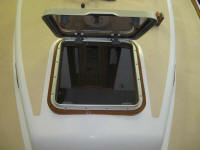
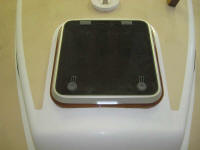
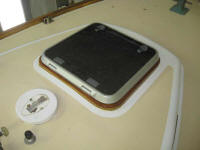
|
I wanted to complete the galley sink sump pump installation
over the weekend, so to that end I built a small platform
for the sump to rest upon in the bilge. From a piece
of 1/4" pre-fab fiberglass sheet, I cut a platform just wide
enough to support the sump and its twin mounting flanges
(one on each side). Then, I cut two 1" wide strips of
1/2" thick fiberglass to act as "legs", or spacers, upon
which the platform would sit in the bilge, thereby allowing
water to flow beneath.
Earlier, I'd determined where
I wanted to locate the sump: in the forward bilge
opening, a foot or two ahead of the bilge pump. I determined
this location partly for ease of access, and partly by
necessity: my original thought, which was to locate
the sump in the after part of the bilge just forward of the
engine room, turned out to be less than ideal because of the
profile of the bilge floor in that area (with its lumpy
protruding encapsulated keel bolts), and because of other
obstructions, namely the electric bilge pump hose and the
manual pump hose and strainer. While I could have made
the installation work in this location, it didn't seem
necessary given the choice of another mounting location. |
|

|
To start, I laid the two 1/2" spacers longitudinally in the
bilge, allowing them to rest where they fit naturally off to
the sides of the central keel bolt lumps. Then, I
rested the 1/4" platform atop the spacers, lining up the
forward edges, and made some marks on the platform where the
spacers were for future reference. After removing the
three pieces to the bench and realigning the spacers beneath
the platform according to my marks, I drilled and tapped
four holes for 10-24 fasteners, one at each corner, and
secured the platform to the spacers with 7/16" long pan head
machine screws.
Because of tight access in the bilge, and the way the sump
pump's mounting flanges were located (on the sides), there
would be no access to these fasteners from within the bilge.
Therefore, for future servicing, the platform would have to
be removed in order gain access to the sump fasteners to
dismount the sump itself. So by securing the
longitudinal spacers permanently to the bilge, which I'd do
shortly, and having the platform itself secured to the
spacers with machine screws but no adhesive, I'd be able to
easily remove the entire platform from the bilge.
Continuing on, I returned
the now-assembled platform to the bilge, and mocked up the
sump on top of it. I adjusted the sump slightly fore
and aft as needed to allow screwdriver access to the four
platform mounting screws, and also to allow the clear
plastic top of the sump to be removed by maintaining screw
clearance on either side of a wooden cross member that
spanned the transverse center of the opening. I made
some reference marks on the platform, then removed the
assembly to the bench and drilled and tapped holes for the
two fasteners required to secure the sump to the platform.
I used the same 10-24 x 7/16" pan head machine screws for
this. |
|
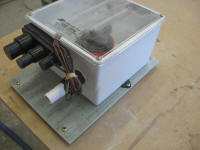
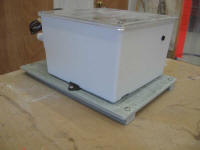
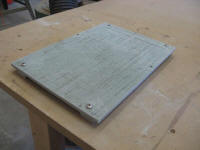
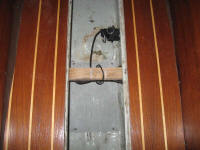
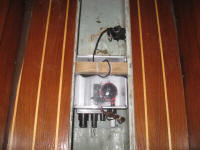 |
Finally, I removed the sump again, and with the platform
still assembled I applied some thickened epoxy to the
bottoms of the spacers and installed the platform in the
bilge. Late in the day, once the epoxy had cured
sufficiently, I carefully removed the four screws securing
the platform to the spacers, leaving the spacers in place,
and applied a coat of Bilgekote to the platform so that it'd
be ready for final installation tomorrow.
|
Total time today:
2 hours
Previous |
Next |
|